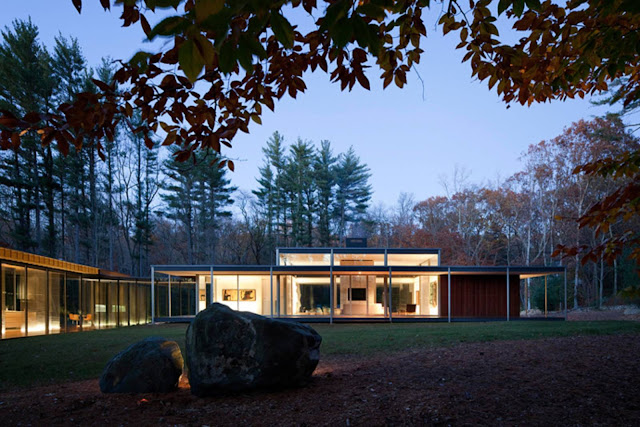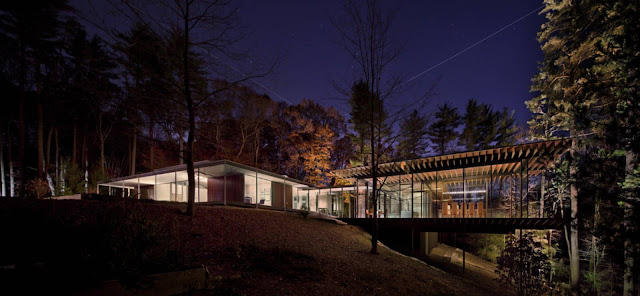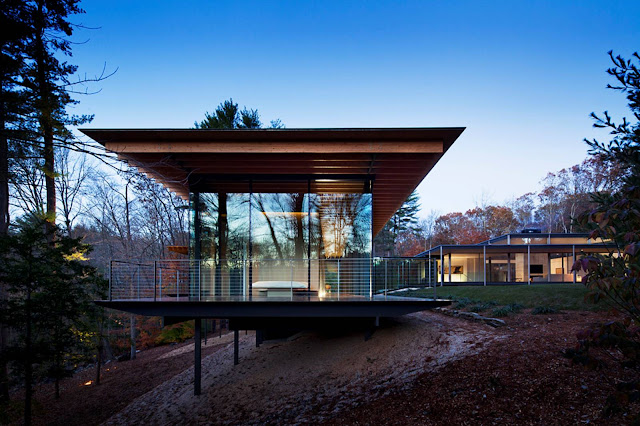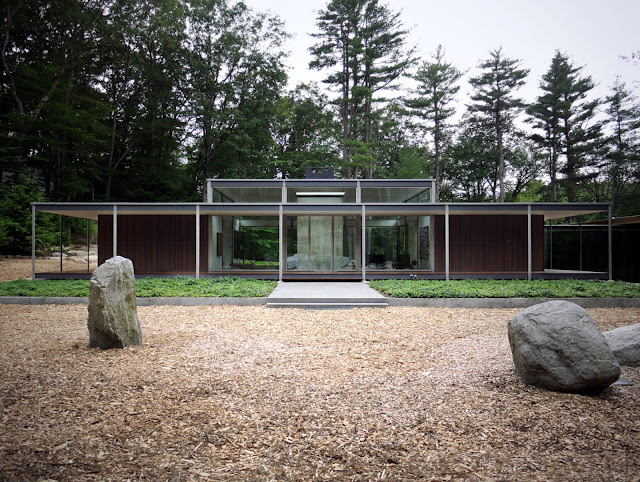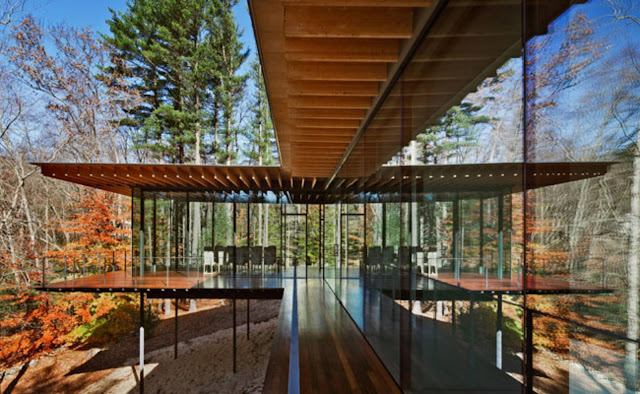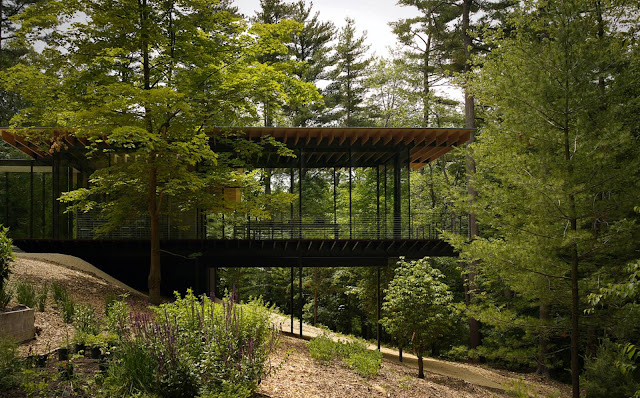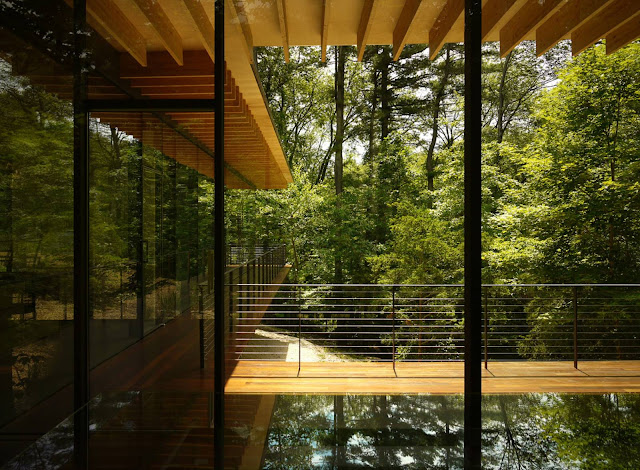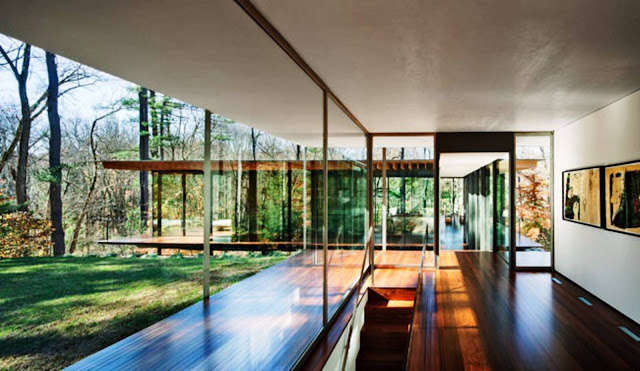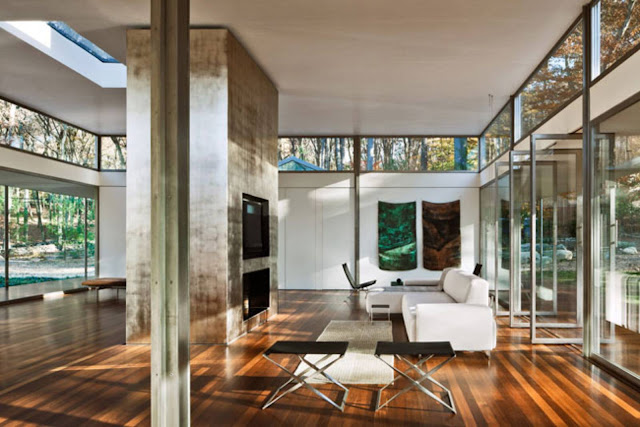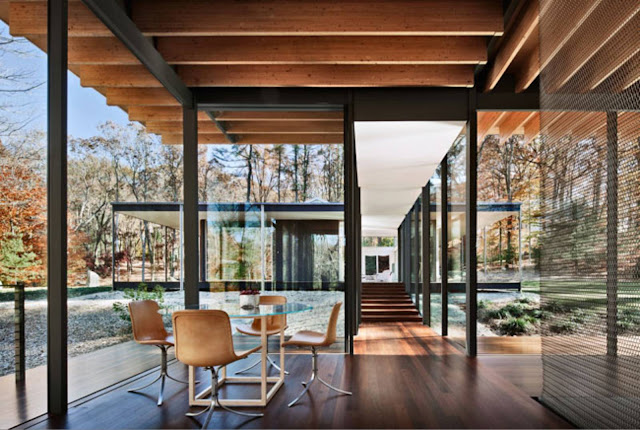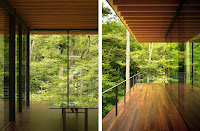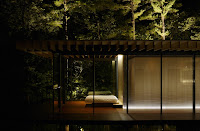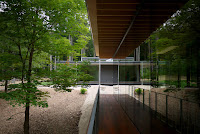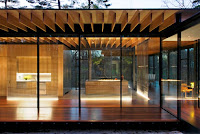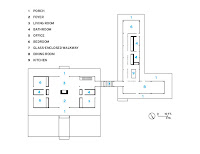This is a project in Connecticut (US) to repair a residence designed by Joe Black Leigh, and add a new house to the site.
New Canaan is known as a town where many houses from the 1950s by such architects as Philip Johnson and Marcel Breuer still remain, and the one we worked on was the residence for Joe Black Leigh (built in 1956), also a friend of Philip Johnson.
Our aim was to inherit the spirit of its beautiful glass architecture, or in other words, the spirit of New Canaan.
The existing building was a symmetric glass box of Palladian villa architecture, standing solitarily in a forest. We built a new house to make this glass box orthogonal and formed an L-shaped terrain, as an attempt to create a kind of “intimacy” in the forest.
Philip Johnson’s house stands alone, so we proposed the L-shaped plan in which the new building hitched on the old one, in order to present a new relation between the nature and the architecture.
L-shaped plan is considered the prototype of the staggering layout in traditional Japanese architecture, which allows two axes to cross, frame varied spaces, create a sense of floating in the corners, and allow one to change consciousness by turning.
As an attempt to make the architecture “intimate,” we adopted a type of mixed structure in the new house, where a wooden joisted roof comes over pillars of flat steel bars in 3 inches × 6 inches.
In addition, we slightly shifted the position of the pillar at the corners to further enhance transparency and accelerate the moving of consciousness in this part.
We gave a major change also in the existing house, by getting rid of the symmetry and covering the exterior with wooden louvers, so that the architecture would gain more “intimacy”.
Thus, we worked to realize an “intimate transparency” or “mild transparency” to take over the isolated transparency of the 1950s.
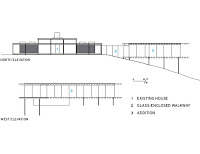
Location: New Canaan, USA
Architect: Kengo Kuma& Associates
Area: 830 m2
Year: 2010

